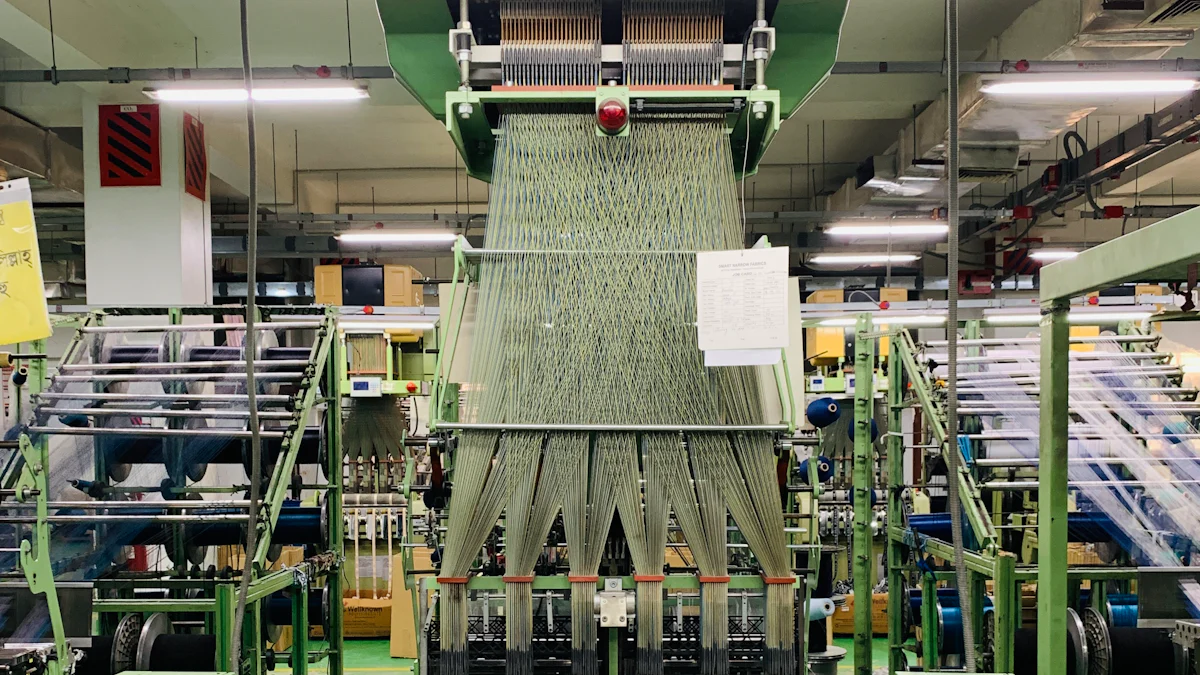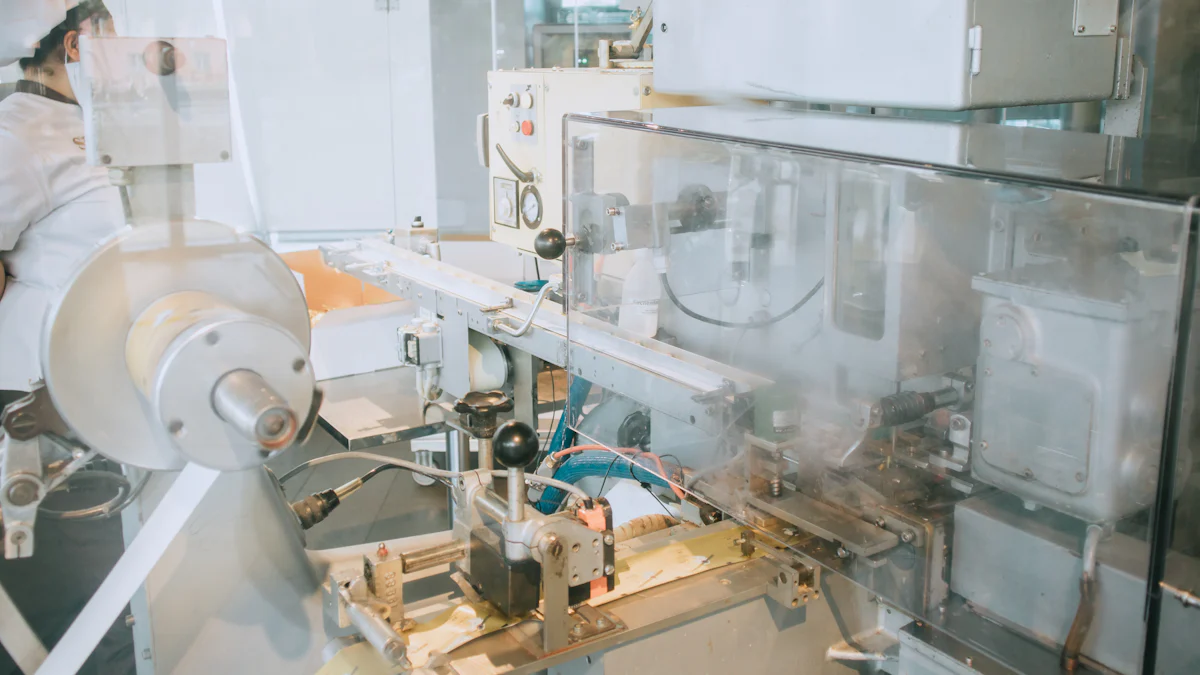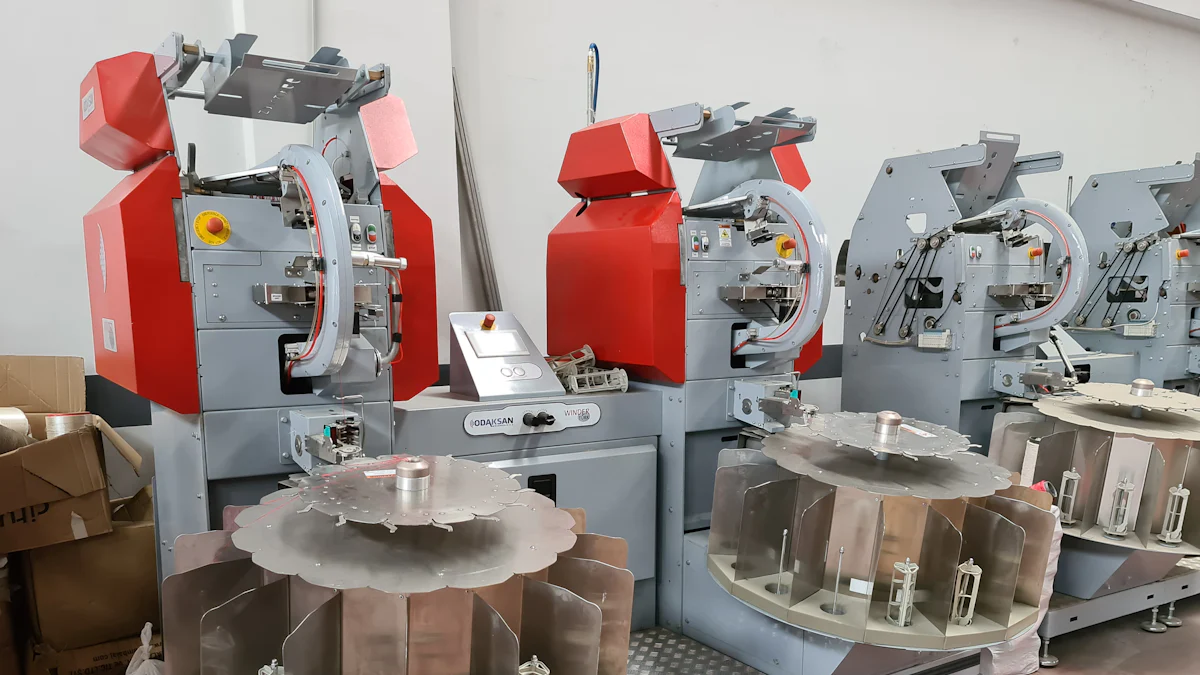
Starting a lighter production line can be simpler than you think. With the right lighter making machine, you can streamline the process and ensure high-quality results. Focus on selecting machines that suit your needs, like a Label Machine/Paper Wrapping Machine for efficient packaging. Follow this guide to begin your production journey confidently.
Key Takeaways
- Set your goals and budget before you begin. This keeps your setup on track and avoids extra costs.
- Pick key machines like molding and assembly ones for better work and good product quality.
- Teach your team how to use machines safely. This boosts work speed and keeps everyone safe.
Define Your Production Goals and Requirements
Before setting up your lighter production line, you need to define clear goals and requirements. This step ensures that your production process aligns with your business objectives and market needs.
Determine Production Volume and Market Demand
Start by estimating how many lighters you plan to produce daily, weekly, or monthly. Research your target market to understand the demand for lighters in your region or industry. Look at trends, customer preferences, and competitor offerings. A clear understanding of market demand helps you decide the scale of your production. For instance, if demand is high, you may need multiple lighter making machines to meet your goals.
Set a Realistic Budget
Establishing a budget is crucial for managing costs effectively. List all potential expenses, including the cost of machines, raw materials, labor, and utilities. Research the price range of essential equipment like injection molding machines or assembly machines. Allocate funds for unexpected expenses to avoid disruptions. A well-planned budget ensures you can invest in quality machinery without overspending.
Assess Space and Utility Needs
Evaluate the space available for your production line. Ensure the area can accommodate all machines and allow for smooth workflow. Check utility requirements, such as electricity and ventilation, to support the operation of your equipment. For example, some lighter making machines may require specific power capacities. Proper planning of space and utilities prevents delays during setup.
Tip: Create a checklist of your production goals, budget, and space requirements to stay organized throughout the setup process.
Essential Lighter Making Machines

Setting up a lighter production line requires specific machines to ensure efficiency and quality. Each machine plays a vital role in the manufacturing process. Here’s a breakdown of the essential equipment you’ll need.
Injection Molding Machines for Plastic Components
Injection molding machines are crucial for creating the plastic parts of lighters, such as the casing. These machines heat plastic materials and inject them into molds to form precise shapes. Choose a machine that matches your production volume. High-quality molds ensure consistent results and reduce waste.
Lathe Machines for Metal Parts
Lathe machines are essential for crafting metal components like the flint wheel or gas valve. These machines shape and cut metal with precision. Select a lathe machine that offers adjustable settings to handle different sizes and designs. Properly machined metal parts improve the durability of your lighters.
Automatic Assembly Machines for Ignition Mechanisms
Automatic assembly machines streamline the process of putting together ignition mechanisms. These machines combine various parts, such as the flint, spring, and wheel, into a functional unit. Automation reduces manual labor and speeds up production. Look for machines with high accuracy to avoid assembly errors.
Testing and Quality Control Equipment
Testing equipment ensures your lighters meet safety and performance standards. Machines like flame testers and gas leak detectors help identify defects. Quality control equipment protects your brand reputation by ensuring only reliable products reach the market.
Packaging Machines for Final Products
Packaging machines prepare your lighters for distribution. These machines wrap, label, and seal the products efficiently. A good packaging machine enhances the presentation of your lighters and protects them during transit. Choose a machine that supports your desired packaging style.
Tip: Invest in machines that offer scalability. This allows you to increase production as your business grows.
Step-by-Step Guide to Setting Up the Production Line

Plan the Layout for a Straight-Line Workflow
Designing an efficient layout is the first step in setting up your production line. Arrange the machines in a straight-line workflow to minimize unnecessary movement of materials. This setup ensures that each step in the manufacturing process flows smoothly into the next. For example, position the injection molding machine at the start, followed by assembly and testing equipment. A well-planned layout reduces production time and improves overall efficiency.
Install and Position Machines Strategically
Place each machine in a location that maximizes accessibility and functionality. Ensure there is enough space around the machines for operators to work comfortably. Align the machines to avoid bottlenecks during production. For instance, keep the packaging machine near the final testing station to streamline the process. Proper positioning also helps maintain a safe working environment.
Calibrate Machines for Precision and Efficiency
Calibrating your machines is essential for achieving consistent results. Adjust the settings of each lighter making machine according to the specifications of your product. Test the machines after calibration to ensure they operate at peak performance. Regular calibration minimizes errors and reduces material waste, saving you time and resources in the long run.
Establish a Workflow for Seamless Production
Create a clear workflow that outlines each step of the production process. Assign specific tasks to your team members and provide detailed instructions for operating the machines. Use visual aids like charts or diagrams to help everyone understand their roles. A well-defined workflow ensures that your production line runs smoothly and meets your output goals.
Tip: Review your workflow regularly and make adjustments to improve efficiency as your production needs evolve.
Operational Considerations for Smooth Production
Train Staff on Machine Operation and Safety
Proper training ensures your team operates machines efficiently and safely. Begin by introducing the basic functions of each machine. Demonstrate how to start, stop, and adjust settings. Provide hands-on practice under supervision to build confidence. Highlight common issues and teach troubleshooting techniques.
Safety training is equally important. Explain the risks associated with each machine and how to avoid accidents. Use visual aids like posters or videos to reinforce safety practices. Encourage your staff to wear protective gear, such as gloves and goggles, at all times.
Tip: Conduct regular refresher sessions to keep your team updated on new procedures or equipment.
Schedule Regular Maintenance for Machines
Routine maintenance keeps your machines running smoothly and prevents costly breakdowns. Create a maintenance schedule for each piece of equipment. Include tasks like cleaning, lubrication, and part replacement. Assign a team member to oversee maintenance and document completed tasks.
Inspect machines daily for signs of wear or damage. Address minor issues immediately to avoid larger problems. For example, replace worn-out belts or tighten loose bolts. Regular maintenance extends the lifespan of your machines and ensures consistent production quality.
Note: Partner with the machine manufacturer for professional servicing when needed.
Implement Safety Protocols and Compliance Measures
Establish clear safety protocols to protect your team and comply with regulations. Post safety guidelines near each machine. Conduct regular safety drills to prepare for emergencies like fires or gas leaks.
Ensure your production line meets local compliance standards. This includes proper ventilation, fire extinguishers, and emergency exits. Keep records of inspections and certifications to demonstrate compliance.
Reminder: A safe workplace boosts morale and reduces downtime caused by accidents.
Tips for Scaling and Improving Efficiency
Automate Repetitive Tasks with Advanced Technology
Automation can transform your production line. By automating repetitive tasks, you reduce manual labor and increase output. For example, robotic arms can handle assembly tasks like attaching ignition mechanisms. These machines work faster and more accurately than humans.
Consider upgrading to conveyor systems for material movement. This eliminates the need for manual transportation between machines. Automated packaging machines can also speed up the final stages of production. Look for technology that integrates seamlessly with your existing setup.
Tip: Start small by automating one task. Gradually expand automation as your budget allows.
Monitor and Analyze Production Metrics
Tracking production metrics helps you identify areas for improvement. Use software to monitor key metrics like output rate, defect percentage, and downtime. Analyze this data regularly to spot trends. For instance, if downtime increases, investigate the cause immediately.
Set performance benchmarks for your team and machines. Compare actual results with these benchmarks to measure efficiency. Share the findings with your team to encourage accountability.
Reminder: Accurate data leads to better decisions. Invest in reliable monitoring tools to avoid errors.
Upgrade Machines for Higher Output and Quality
Older machines may limit your production capacity. Upgrading to modern equipment improves both output and product quality. For example, advanced injection molding machines produce more precise plastic components.
Research machines with features like faster cycle times or energy efficiency. These upgrades save time and reduce operating costs. Partner with trusted manufacturers to ensure you get durable equipment.
Note: Plan upgrades during low-demand periods to avoid disrupting production.
Setting up a lighter production line becomes manageable when you follow the right steps. Define your goals, choose essential machines, and plan an efficient workflow. With proper training and maintenance, you can ensure smooth operations.
Reminder: Success starts with a single step. Begin your journey today by researching the best machines for your needs.
FAQ
1. What is the average cost of setting up a lighter production line?
The cost depends on your production scale. A small setup may start at $50,000, while larger operations can exceed $200,000. Budget carefully for machines and utilities.
Tip: Research multiple suppliers to find cost-effective options without compromising quality.
2. How much space do I need for a lighter production line?
You need at least 1,000 square feet for a small-scale setup. Larger operations may require 5,000 square feet or more. Ensure enough room for machines and workflow.
3. What safety measures should I prioritize during production?
Focus on proper ventilation, fire extinguishers, and emergency exits. Train your team on machine safety and provide protective gear like gloves and goggles.
Reminder: Regular safety drills help prepare your team for emergencies.

